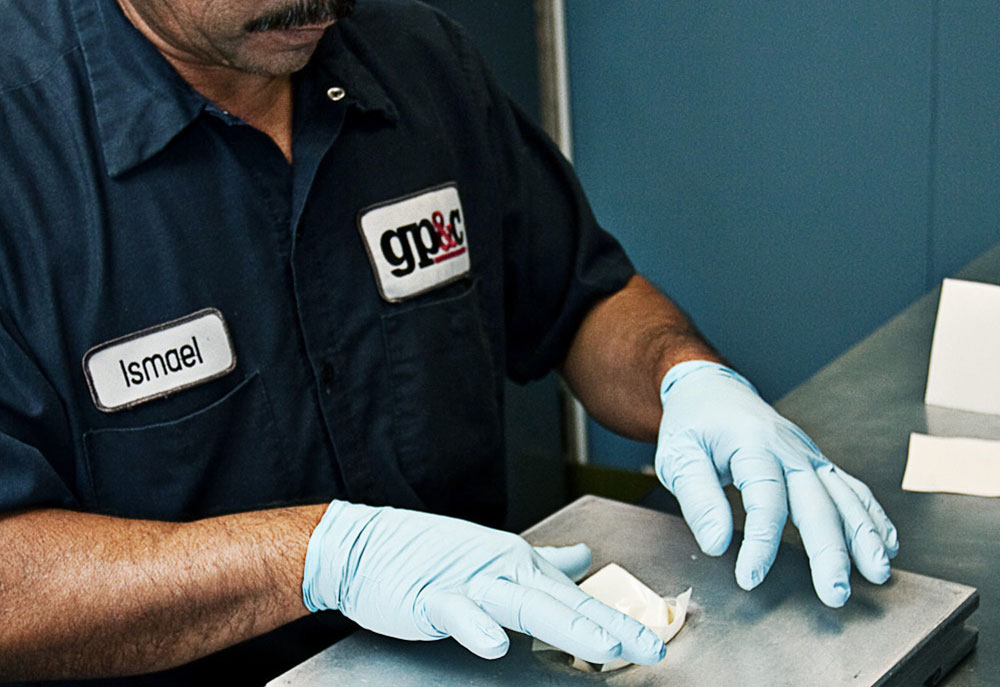Material Manufacturing
Wet Wrapping
This is the manufacturing process of making composite material by hand-wrapping fiberglass cloth around a mandrel or shaped mandrel, while applying resin. While being more labor-intensive, it is ideal for parts with low mechanical loads or parts that have thicker cross-sections.
Filament Winding
In this process, reinforcing roving (fibers) are wound around a mandrel or shaped mandrel by computer controlled 4 axis CNC filament winders. The winder is able to closely control the wind pattern tension and angle, laying down multiple tows at angles established by engineering to meet mechanical strength requirements. This process is a very consistent and cost-effective way to manufacture composite materials.
Watch this Filament Winding Capabilities and Manufacturing Tour, narrated by our Engineering Supervisor, Nick Webster.
Pressure Impregnation/Resin Transfer Molding
This is a high-tech process in which fiberglass cloth is dry wrapped onto a mandrel or shaped mandrel. A vacuum is pulled on the material to remove moisture and air while resin floods the chamber at high pressure. This process yields a greater cloth-to-resin ratio, by weight, making it stronger, so it is ideal for parts that require higher mechanical loads.

Pre-Preg
This is a more labor-intensive process that uses a fiberglass material that contains the resin in the cloth, known as pre-preg material. It’s most commonly processed by carefully hand-laying many layers of material in a mold and de-bulking, which removes voids. The mold is then placed in a vacuum bag and cured. This process is typically used for unusual geometry and low volume.
